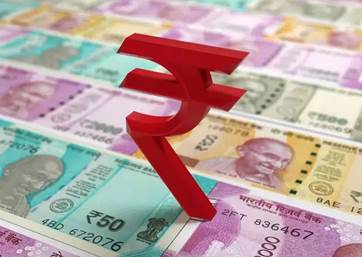It links up with the limitations to such domestic currency-based trade settlements. The first is, of course, geopolitical: Russia has now emerged as India’s biggest crude supplier, from a distant No 12 in 2021-22.
While curtailing dollar dependence and exploring bilateral trade options by paying/settling in domestic currencies makes for sound economics, it cannot replace the need for India to export more. The idea will only work if Indian exports pick up
By: Editorial
November 10, 2022 4:14:57 am
India’s foreign exchange reserves, at $531.08 billion as on October 28, have dipped from a peak of $642.02 billion a year ago. It isn’t surprising, therefore, that the government and the Reserve Bank of India (RBI) are seeking to conserve reserves by facilitating international trade in domestic currency, as opposed to the dollar. The RBI had, in September, allowed the public sector UCO Bank to open a special rupee “Vostro” account for Russia’s Gazprombank. This was to enable payments for imports from Russia to be made in rupees and credited to the said account. The monies deposited in the same Vostro account could, in turn, be debited for paying Indian exporters to Russia in rupees. Besides UCO Bank, two Russian-owned banks — Sberbank and VTB Bank — have opened special Vostro accounts at their respective branches in Delhi. To the extent that payments for trade between the two countries happens in rupees, it reduces India’s dollar dependence and depletion in forex reserves.
According to a report in this newspaper, India wants to push similar rupee-based bilateral trade mechanisms with Sri Lanka, Maldives and assorted southeast Asian, African and Latin American countries. The idea isn’t new. Even before Russia, the same UCO Bank operated a special Vostro account of four Iranian commercial banks, where Indian refiners deposited rupee payments for import of crude from the Western sanctions-hit Islamic republic. Iran used these funds to import basmati rice, tea, sugar, soyabean meal and pharmaceuticals, especially during 2016-17 to 2019-20. The arrangement worked quite smoothly till the Vostro account ran dry after India practically stopped sourcing crude from Iran, following the lifting of sanction waivers by the US.
It links up with the limitations to such domestic currency-based trade settlements. The first is, of course, geopolitical: Russia has now emerged as India’s biggest crude supplier, from a distant No 12 in 2021-22. How long can this sustain in a deepening sanctions regime? The second is more basic. India’s imports from Russia — mainly petroleum, coal, fertilisers and sunflower oil — stood at $21.35 billion during April-September, but its exports to that country were worth just over $1 billion. The trade imbalance would leave far too much unused rupees in the Vostro account. It also explains why the RBI’s alternative rupee trade payment mechanism hasn’t really taken off and Indian refiners are still buying Russian oil using dollars. Russia, if at all, seems keen on payment in UAE dirham or rouble, but not rupee. Trade ultimately has to be a two-way street. While curtailing dollar dependence and exploring bilateral trade options by paying/settling in domestic currencies makes for sound economics, it cannot replace the need for India to export more — whether to Russia or China.
© The Indian Express (P) Ltd
